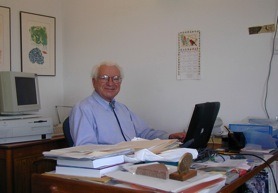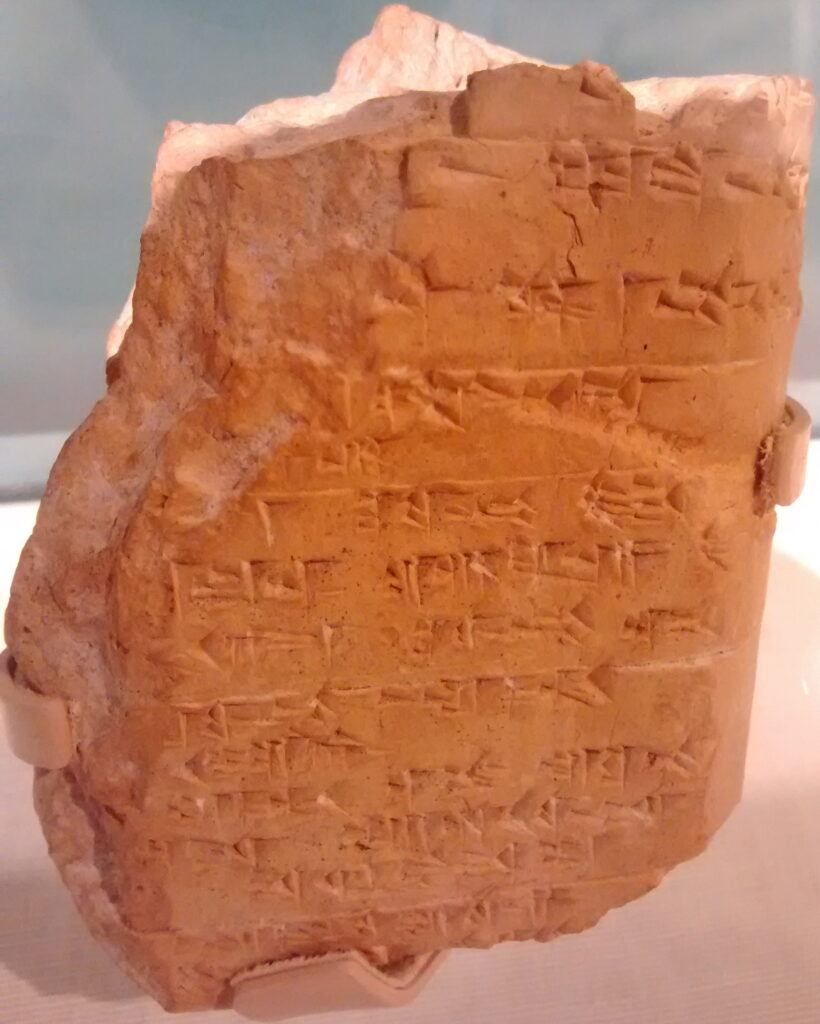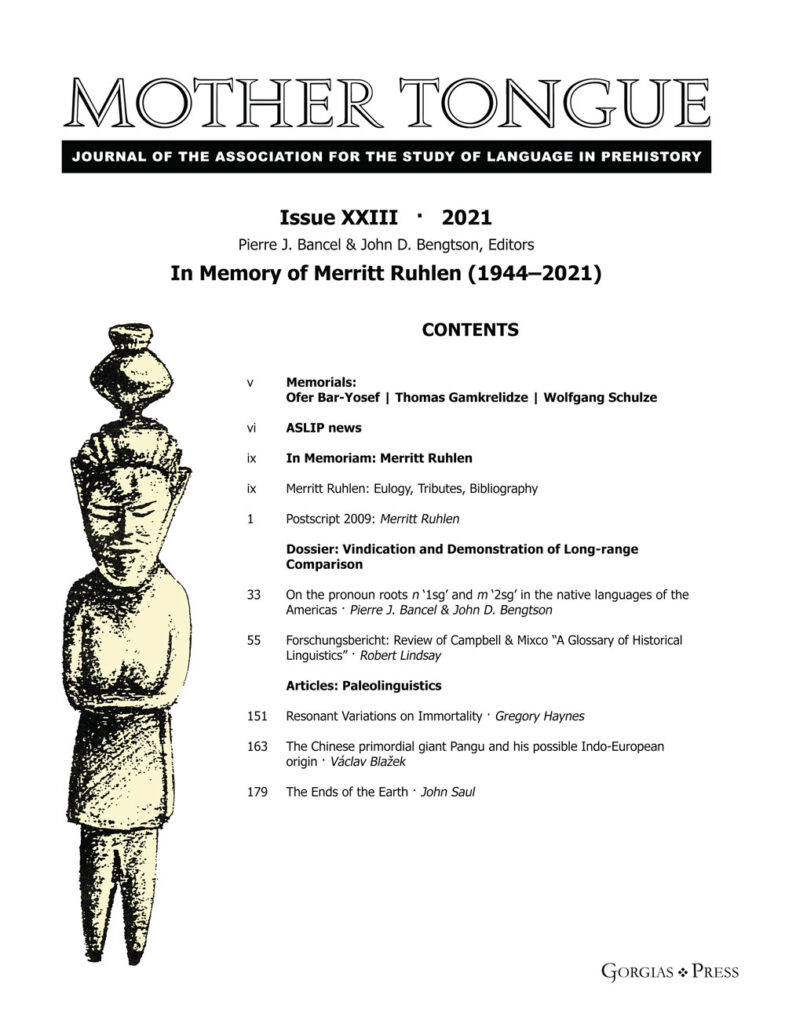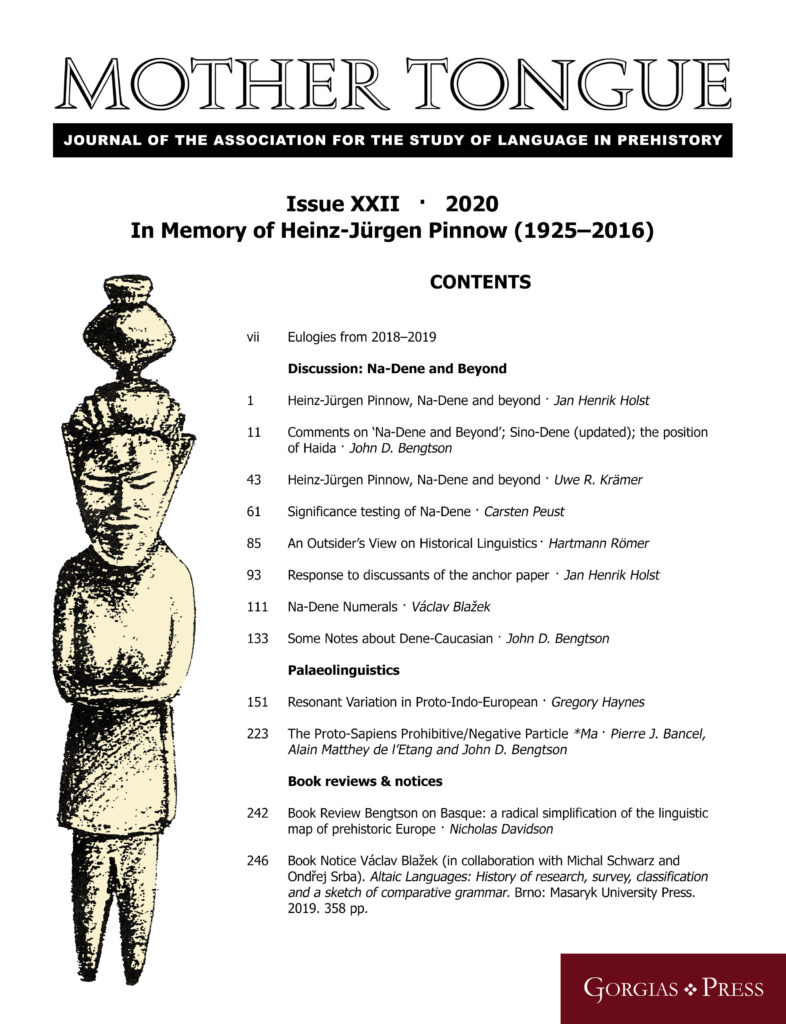Volume 24 (2023) of the Mother Tongue Journal is now in print
The 24th issue of the Mother Tongue Journal is now in print.
View an on-line version of the current issue.
Print versions of this issue are available from Gorgias Press.
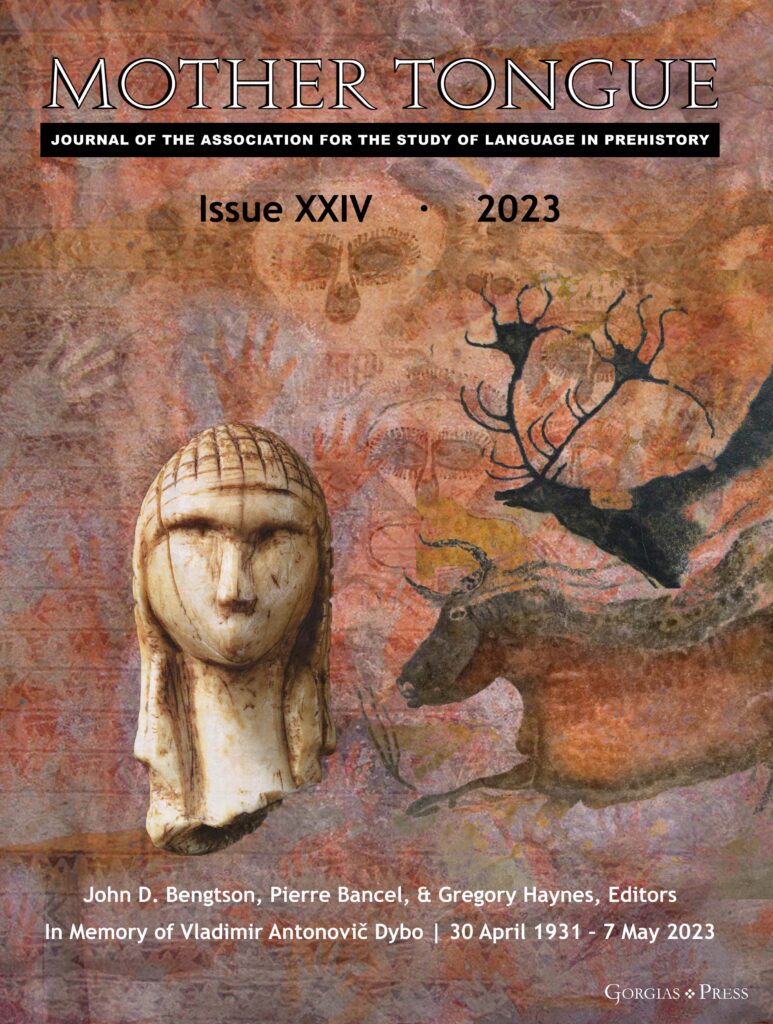
Sadly, we note the passing of John Bengtson
It is with deep regret that I’m writing to let you know that John Bengtson passed away on March 3rd, 2024. This is a great loss for ASLIP and the Mother Tongue journal, as John had been one of the early drivers of both, along with founder Harold C. Fleming before his own passing. John’s work on the Dené-Caucasian hypothesis, including his proposed inclusion of the Vasconic and Burushaski languages (which he grouped with the Caucasian languages in a Macro-Caucasian subgroup) has been some of the most rigorous and important work in historical linguistics of the past few decades. It was John’s work with Merritt Ruhlen which originally caught my attention as an undergraduate and led to my own interest in long-range linguistics. John will be greatly missed, and we are thankful to him for his hard work in the past few decades which will be his legacy.
-Peter Norquest, ASLIP President
The Mother Tongue Journal is now available online
Mother Tongue Journal is alive and well!
After a three-year hiatus in publication (2017, 2018, 2019) we are now back to our normal annual publication schedule. Some former subscribers may not be aware that issues for 2020 and 2021 have been published and are available at this time.
In order to make the Journal more accessible to readers, ASLIP has made the decision to adopt an Open Access model (free for authors, free for readers) and to post current and past issues of its publications on the Mother Tongue Journal website. For those who prefer a print copy, these are now available directly from our publisher, Gorgias Press. Consequently, subscribers are no longer requested to pay membership fees, although donations for general support are always appreciated.
Authors may submit articles to the editor at the address shown on the Contact Us page.
Please help us spread the word to interested colleagues and friends.
A Call for Papers
Dear long-range prehistorians,
The Association for the Study of Language in Prehistory is soliciting articles for the next volume of our journal Mother Tongue (Mother-Tongue-Journal.org). Mother Tongue focuses on long-distance language relationships on a global scale, and all articles exploring relationships between languages, language families and language phyla are welcome provided that they use rigorous comparative methodology with well-documented sources.
Additionally, we also wish to solicit articles from any other field of study which complements historical and comparative linguistics in prehistory. These include, but may not be limited to, archaeology, population genetics, and comparative mythology and musicology.
Article submissions and questions may be directed to Gregory Haynes at haynes@sonic.net. Please refer to the author guidelines for paper content and format – all authors will be responsible for ensuring that their articles meet the criteria described therein.
Volume 23 (2021) of the Mother Tongue Journal is now in print.
View an on-line version of the current issue
Print versions of this issue are available from Gorgias Press.
Volume 22 (2020) of the Mother Tongue Journal is now in print.
View an on-line version of Mother Tongue 22 (2020)
Print versions of this issue are available from Gorgias Press.
Murray Gell-Mann on Paleolinguistics
Comparative and historical linguists have succeeded in classifying attested languages in families, each of which consists of daughter languages descended from a common proto-language spoken a long time ago. Occasionally that proto-language is itself attested (like Latin, the ancestor of the Romance languages). Otherwise, it has had to be reconstructed by linguists from their knowledge of the daughter languages. Much of the work consists of comparing items of basic vocabulary (words or meaningful parts of words) of similar meaning.
In classifying languages this way, one is concerned with “vertical transmission” of language from parent (or other care giver) to child. One has to watch out for “borrowing” or “horizontal transmission” from other languages, which can complicate the picture. In addition, there are more or less regular sound changes over the generations, different in different branches, that are studied carefully by historical linguists. For example, in the Indo-European family of languages, an original initial p sound becomes an f sound in the Germanic languages but remains a p sound in Latin and the Romance languages. Compare Latin pater and English father or Latin pullus and English foal.
The oldest universally recognized families (except in Africa) go back some seven thousand years (like Indo-European ). A few linguists, such as the ones involved in the EHL project, go beyond this stage and classify the families into super-families and even super-super-families, where the age of the proto-language may be ten or even fifteen thousand years. These “long-range” relationships are not accepted by most “mainstream” linguists in North America and Western Europe, although treated quite seriously in Russia and Eastern Europe. For some reason the four African super-families are exempt from condemnation by the “mainstream” crowd and so articles on them appear in the standard encyclopedias, which do not have similar articles on the superfamilies of Eurasia, which are carefully studied by EHL linguists. Yet the African super-families could be criticized on the same grounds as the others. What are those grounds? Mainly that when the age of the superfamily is ten or twelve thousand years or more, it is thought to be too difficult to weed out borrowing, similarity by accident, and faulty detection of the patterns of sound change. But if that objection were correct, then, as the age of the proto-language increases, there should be a steady decrease in the amount of information available for language classification, and at seven thousand years the evidence for families such as Indo-European should have dwindled to a small amount, in order that it be inadequate at ten or twelve thousand years. That, however, is not the case. The evidence for the Indo-European family is in fact overwhelming. If it were reduced by a factor of ten, it would still be convincing.
The EHL project consists of several parts. One is the continued growth of the database, covering the languages of most of the world and their relationships. Nearly all the languages of Eurasia, Northern Africa and the Pacific and Indian Ocean islands (except for some in the vicinity of New Guinea and Australia), have been found to form four super-families, which in turn form a single super-super-family. Some of the indigenous languages of the Americas certainly fit into this scheme, and it may turn out that all of them fit into the afore-mentioned super-super-family. One important EHL activity consists of reviewing the evidence on the classification of the American languages. Another important activity involves seeing whether a relationship can be established with the two major super-families of Black Africa, Nilo-Saharan and Niger-Kordofanian.
It is important to improve the arguments for acceptance of long-range relationships, especially by critical examination of the arithmetical arguments that have been put forward as allegedly showing that the observed similarities of lexical items in super-families could be explained by chance.
A fascinating topic is the prevalence of “bottlenecks.” For example, the native Australian languages form a family that appears to be less than twelve thousand years old, judging by lexical similarities. However, there have been modern humans in Australia since the first successful explosion out of Africa, which peopled almost all of the Old World.
That took place around fifty thousand years ago, and the Australian language family is certainly not fifty thousand years old. The most appealing explanation is that a particular language, spoken either by a group of Australians or else by a group of invaders from New Guinea, spread their language over the whole continent, leaving only minor traces of the earlier languages .
It is conceivable that a similar bottleneck involved all or nearly all of the world’s languages. Say that some eighteen or twenty thousand years ago, at the height of the last ice age, when there were very few refugia for human beings on the planet, one of the languages then spoken eliminated all or most of the others. We would then see a number of lexical similarities over all or most of the world. In fact, there is some evidence for such “global” words and roots. It is important to follow up these clues and see if they withstand careful (but not bigoted) examination. Etymological dictionaries are being produced covering some large families and some superfamilies as well.
This project employs quite a few people, some in the US, some in Russia, and one or two who commute between Santa Fe and Moscow. They perform various tasks, including putting dictionary information into the database, working out language relationships based on lexical information, interacting with specialists in other fields, refining the ideas of lexicostatistics and glottochronology (measuring closeness of relationships and times of separation of languages by using overlaps in basic vocabulary), etc.
The project convenes workshops every couple of years at which the linguists interact with leading geneticists, archaeologists, physical and cultural anthropologists, and earth scientists. The object is to understand the migrations of early modern humans and the relation of those migrations to the history of languages.
